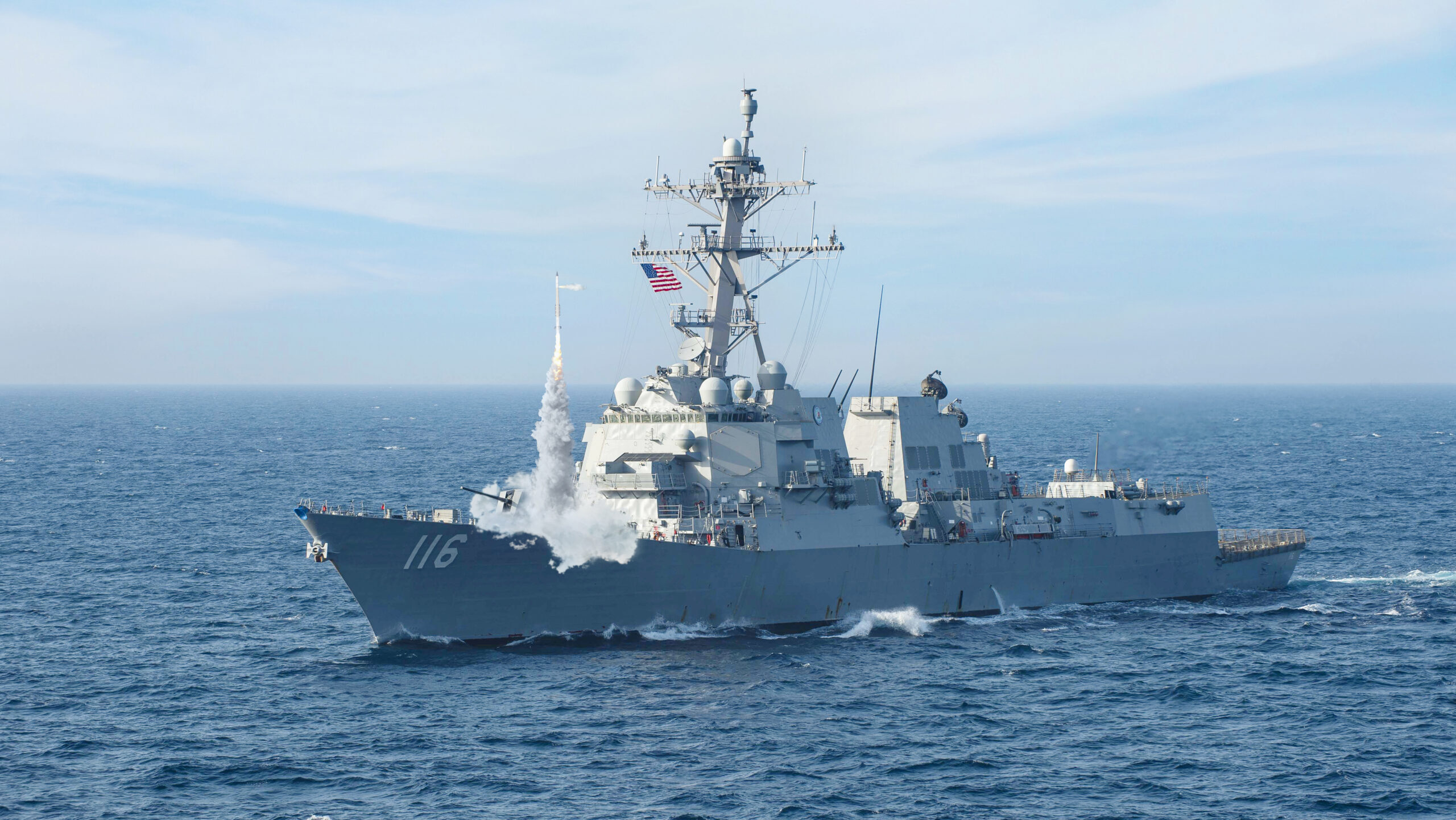
The guided-missile destroyer Thomas Hudner (DDG 116) sails alongside the aircraft carrier USS Dwight D. Eisenhower (CVN 69) in the Arabian Sea. (US Navy/Mass Communication Specialist 3rd Class Cameron Pinske)
WASHINGTON — Lockheed Martin is planning a live fire test event in the coming months to prove it can integrate a trusted US Army air defense missile with the Navy’s proven combat system for the surface fleet — an event in which the Navy told Breaking Defense it will participate and independently assess.
“In a relatively short amount of time for a relatively modest amount of research and development, you can take an existing program of record, the [Patriot Advanced Capability-3 Missile Segment Enhancement] and integrate it with another existing program of record, the Aegis Weapon System. Both of them are extremely capable,” Thomas Copeman, vice president of strategy and naval systems within Lockheed’s missiles and fire control business segment, told Breaking Defense in a Jan. 18 interview.
PAC-3 has a nearly 30-year history with the Army with continuous upgrades to include the newer PAC-3 MSE configuration. As for its use on the ground, soldiers typically use Patriot launchers to fire the interceptors at targets like tactical ballistic missiles, cruise missiles and aircraft: In other words, for air defense. Copeman said the program’s production line currently boasts about 500 missiles per year and is on track to reach 550 by the end of 2024.
The Aegis Weapon System, also primarily built by Lockheed Martin, is used throughout the Navy’s surface fleet to command and control the array of weapons on a given ship. Copeman said the impetus to begin integrating the two systems started in 2017 through a separate effort funded by the Missile Defense Agency, but to date, Lockheed’s testing has largely been funded internally.
Copeman argued the selling point for the Navy is that PAC-3 MSE overlaps with several missions that currently use the Raytheon-made Standard Missile-6. By supplementing the Navy’s inventory with PAC-3, that frees up the SM-6 inventory for “offensive measures” that PAC-3 can’t accomplish, he said.
As for the service’s part, a Navy spokesperson told Breaking Defense today the service will participate in Lockheed’s demonstration and “conduct independent analysis of [the] performance.”
“The addition of Patriot Advanced Capability-3 Missile Segment Enhancement (PAC-3 MSE) to ships would not fill a gap but instead would complement the current Vertical Launch System (VLS) inventory of surfac-to-air interceptors, giving the Navy greater missile inventory and expanding production opportunities,” the spokesperson said, when asked if Lockheed’s offering would fulfill a requirement.
“The Navy recognizes that the PAC-3 MSE surface-to-air missile provides critical air and missile defense for US and coalition assets against an array of enemy threats: including tactical ballistic missiles, cruise missiles, and aircraft. PAC-3 MSE could provide another weapon that would be able to defend against advanced anti-ship weapons,” they added.
If successful, the upcoming live fire test will validate the integration of the PAC-3 MSE using the Mk-41 VLS, which is one of the launchers used by Aegis.
If Lockheed and the Pentagon eventually strike a deal to provide PAC-3 MSE for the Navy’s surface force, it would add to a sizable club of customers to the company’s base that already includes sales to Germany, Japan, Taiwan and South Korea. The MSE variant, specifically, is purchased by Bahrain, Poland, Qatar, Romania and Sweden, according to the company.
Ashley Roque contributed reporting to this story.
Air Force awards SNC $13B contract for new ‘Doomsday’ plane
The win is a major victory for the firm in a competition that saw the surprise elimination of aerospace giant Boeing.


























